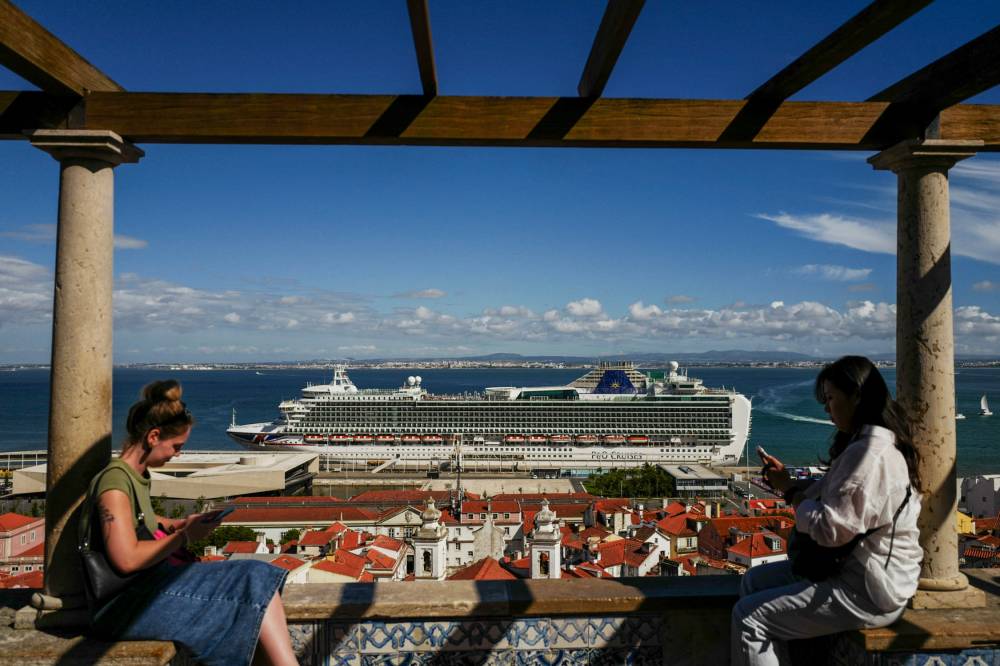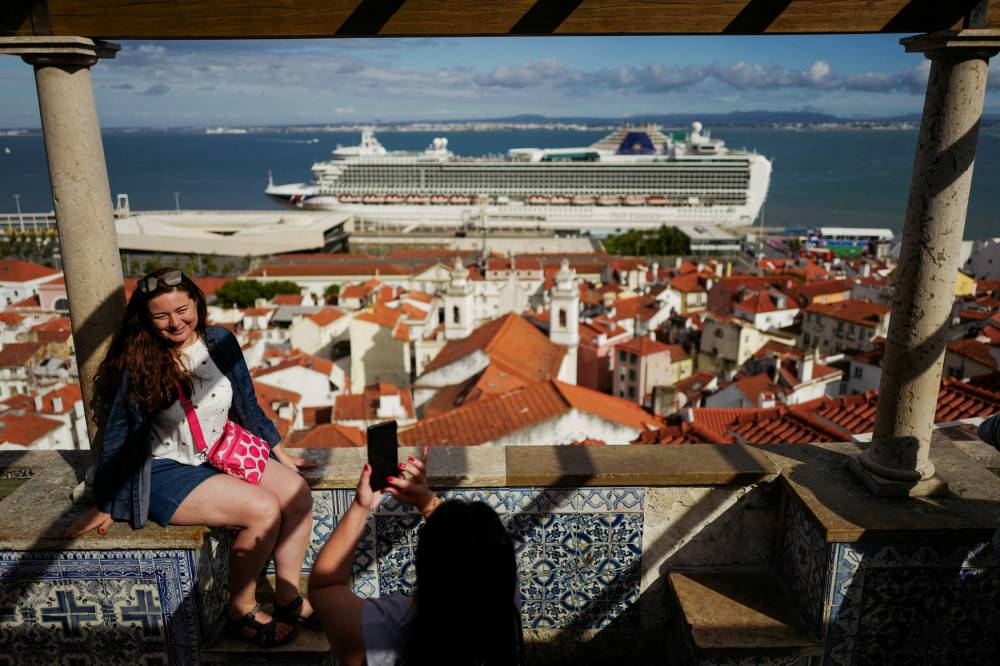When will cruise ships plug into shore power in Europe?

LISBON/MADRID—Residents near the port of Lisbon and elsewhere hope plug-in infrastructure can take some of the pain out of sharing their cities with cruise ships that belch out fumes while pleasure-seeking passengers see the sights.
European Union rules designed to reduce carbon emissions have focused attention on the issue by setting a 2030 deadline for maritime ports to have installed the infrastructure ships need to use electricity rather than highly polluting marine fuel when they are moored.
Residents say switching to electricity could be a boon.
“It is as if a giant car had its engines on in front of us,” Joao Branco told Reuters as he stood at a viewpoint in Alfama, one of the city’s oldest neighborhoods, where Lisbon’s cruise terminal was inaugurated in 2017.
Branco, 42, who with his partner, is expecting his first child, hopes the next generation will be spared some of the toxins and noise as hundreds of vessels, carrying hundreds of thousands of passengers every year, leave their engines running in port to power onboard amenities including lighting and air conditioning.
Carlos Torres, 48, also a resident of Alfama, said electrification was essential.
“The activity of the cruise terminal has a huge environmental impact and it has a negative impact on the health of those who live here,” he said.

Fossil fuels
Data from Brussels-based NGO Transport & Environment (T&E) ranked Lisbon as the European city with the fifth highest level of air pollution from cruise ships, behind the ports of Barcelona, Civitavecchia, Palma and Piraeus.
Pollution from marine fuels includes sulphur dioxide, nitrogen oxides and harmful particulate matter as well as carbon emissions.
Depending on a ship’s destination and the regulations in place there, it could be using a fuel whose sulphur content is 100 to 500 times higher than Europe’s sulphur standard for cars, T&E said.
As the number of travelers continues to grow, adding more generally to the strain on local economies, electrification is an imperfect and costly fix.
In Lisbon, the 27-million-euro ($28.97-million) project to lay cables to connect the port to a power station 4.4 kilometers away, is set to be ready by 2029.

It would allow the three cruise ships the port can accommodate at once to connect to the grid, the Portuguese infrastructure ministry said.
Around three-quarters of Portugal’s electricity supply is renewable power and the percentage is rising. Replacing marine fuel as an energy source while ships are moored would reduce 77 percent of greenhouse gases emitted annually around the Lisbon port area, the ministry added.
Carlos Correia, president of Lisbon port, said Portugal’s high percentage of renewable power gave it a major advantage.
“If we had electricity that was produced through fossil fuels … we would be reducing (emissions) here at the port but increasing it at the source,” he said.
Varying pace of change
In neighboring Spain, Barcelona’s port, the country’s busiest for cruise ships, plans to provide electricity at one of its seven cruise terminals by 2026 and at all terminals by 2030.
The smaller port of Palma de Mallorca already supplies power to ferries and said it expects to extend that to cruise ships by 2030.
Elsewhere, officials were more tentative.
At Civitavecchia, near Rome, and Piraeus in Greece, operators said they were studying or planning for onshore power points but cited concerns around electricity capacity.
Beyond Europe, progress is slower, notably in the United States and the Caribbean, the world’s main cruise tourism hub.
Nick Rose, head of environmental, social, and governance at Royal Caribbean, the world’s second largest cruise operator, said the region represented a “unique challenge,” with shore power unlikely to be feasible on most islands.
Along the US West Coast, cruise ports offer at least one berth that can provide shore power, while on the East Coast, Miami’s port says it will be able to provide power to a maximum of three cruise ships at a time by December.
For their part, the cruise ship companies say they are working on the issue.
Leading operator Carnival Corp. said it aimed to achieve “100 percent fleet shore power by 2050,” while Royal Caribbean Group said its full fleet should be retrofitted by 2030.
T&E’s Constance Dijkstra referred to the chicken-and-egg situation often cited with electric vehicle charging, saying lack of demand had slowed the development of infrastructure.
She said cruise ships often do not plug in because it would not be compulsory in Europe until 2030, and cost was a major factor as producing electricity “using dirty fuels” is cheaper.
Lisbon’s port president said the operator had not decided on tariffs but that it was cheaper for ships to rely on engine power for now.
Industry body Cruise Lines International Association (CLIA) said governments must step in, just as they have provided incentives for electric vehicles.
“We are all committed to the green transformation and obviously we all have to do our part,” Alfredo Serrano, the association’s Spanish director said, adding the commitment was that by 2028 around 80 percent of the world’s cruise ships would be equipped to use shore power.
That means a great deal of infrastructures needs to be put in place: only 36 of the 1,200 cruise ports worldwide had the capacity to supply electricity at least at one of their terminals.
Reuters, the news and media division of Thomson Reuters, is the world’s largest multimedia news provider, reaching billions of people worldwide every day. Reuters provides business, financial, national and international news to professionals via desktop terminals, the world's media organizations, industry events and directly to consumers.

















